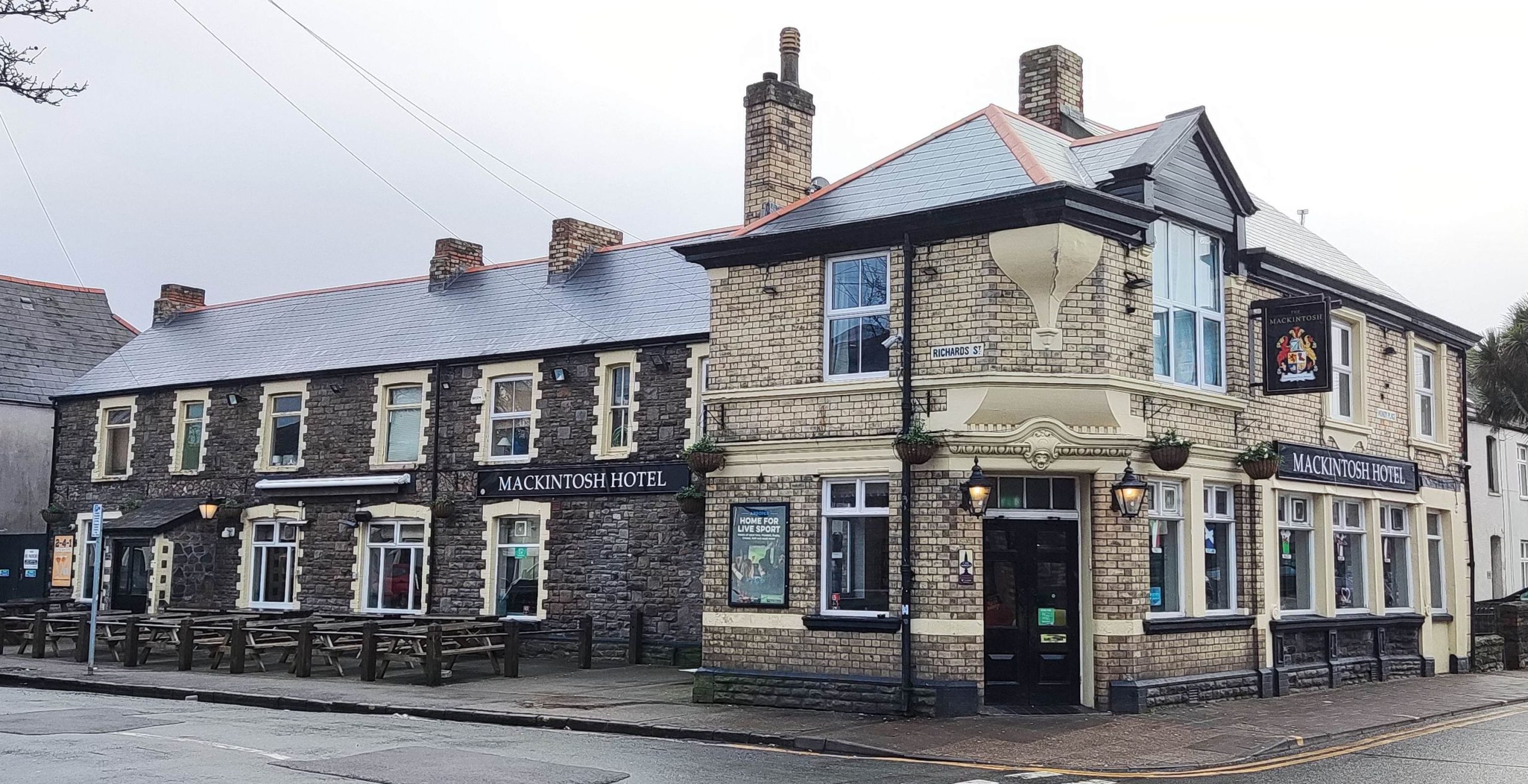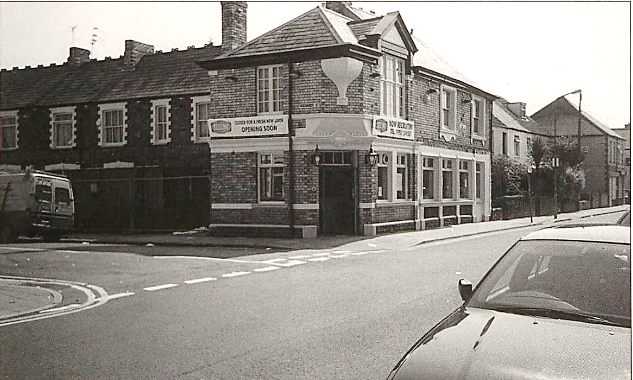
This proposed listing forms part of the draft Cardiff Local Heritage List - Public Houses, Hotels and Clubs (current and former)
Building reference
27 The MackintoshDate
1881Ward
CathaysHistory
In 1880 Harriet Richards (whose family owned Plasnewydd – now the Mackintosh Sports and Social club and a lot of surrounding land), married Alfred Mackintosh, chief of the Mackintosh clan, who had even more land in Scotland. When the land in Cardiff was sold for development, many streets were named after the family, including the Mackintosh Hotel, established in 1881.1
According to Roath Local History Society, the hotel saw some rough incidents in its early years. In 1883, Thomas Coles was charged with cutting and wounding Richard Hughes by throwing a jug of beer at him. In 1901 a French national, Frederick Bidois, living on Cathays Terrace, was charged with assaulting the publican Robert Bucknill, and refusing to leave the premises. This was the fifth time the defendant had been charged. In 1894, newspapers record an interesting point in history: at a meeting of the Cardiff Branch of the Merthyr Philanthropic Society, held at the Mackintosh Hotel, the following resolution was unanimously passed: ‘That a hearty vote of thanks be accorded to Lord Bute, for his benevolence in paying the deficiencies occasioned by the failure of the Cardiff Savings Bank’ (Lord Bute had been President of the Cardiff Savings Bank when it went into insolvency in 1886, because the directors had defrauded large sums of money).
The Hotel was owned by William Hancock’s brewery in 1895 and saw alterations and additions in that same year.
During the later-C20, it has been part of the Sizzling Pub chain and the Stonegate Group. The Mackintosh now advertises itself as a local, student friendly pub in the heart of Cathays, serving food and having pool tables and a large beer garden.2
¹ South Wales Daily News, 3rd May 1881.
2 https://roathlocalhistorysociety.org/local-history/pubs/
Description
The premises occupy a prominent position upon the corner of Richard Street and Mundy Place. The southern range fronting Mundy Place is constructed in buff brick, with a low pennant stone plinth course and ornate painted stone dressings throughout.
The principal entrance is located on the faceted corner, with a fine, egg-and-dart moulded string course and escutcheon over door. Above, a large stone corbel supports the faceted corner to first floor which, in turn, has an over-sized ogee-moulded corbel supporting the projecting hipped roof corner with moulded timber eaves.
Windows to the ground floor are timber casement, with uPVC to the first (replacing sash windows after the year 2000).
A long range returns up Richard Street; set well back from the road, with the appearance of a modified terrace of houses. Formed in snecked pennant stone with stone dressings to window reveals. Areas of random rubble infill indicate changes over time which are currently little understood.
Reason
A prominently located and richly decorated public house of interesting architectural form.
Aesthetic and Historical Value.
Some 140 years of service imparts considerable Communal Value.
References
Glamorgan Archives
BC/S/1/4656
Alterations to Hotel, Mackintosh Hotel, Mundy Place
1884 – Architect: Unknown – Developer: R Bucknell
1 Plan, no elevations.
BC/S/1/10987
Alterations & Additions to Hotel, Mackintosh Hotel, Mundy Place
1895 – Architect: G Thomas – Developer: W Hancock & Co Ltd.
2 plans, no elevations
BC/S/1/34525
Ladies toilet, Mackintosh Hotel, Mundy Place
1943 – Architect: G R H Rogers – Developer: W Hancock & Co Ltd
1 plan, no elevations
BC/S/1/37763
Sign, Mackintosh Hotel, Mundy Place
1948 – Architect: G R H Rogers – Developer: W Hancock & Co Ltd
1 plan, no elevations
DCONC/6/78
1943 – Mackintosh Hotel
Possible Plans
Additional images

Undated archive photo (© Brian Lee)

